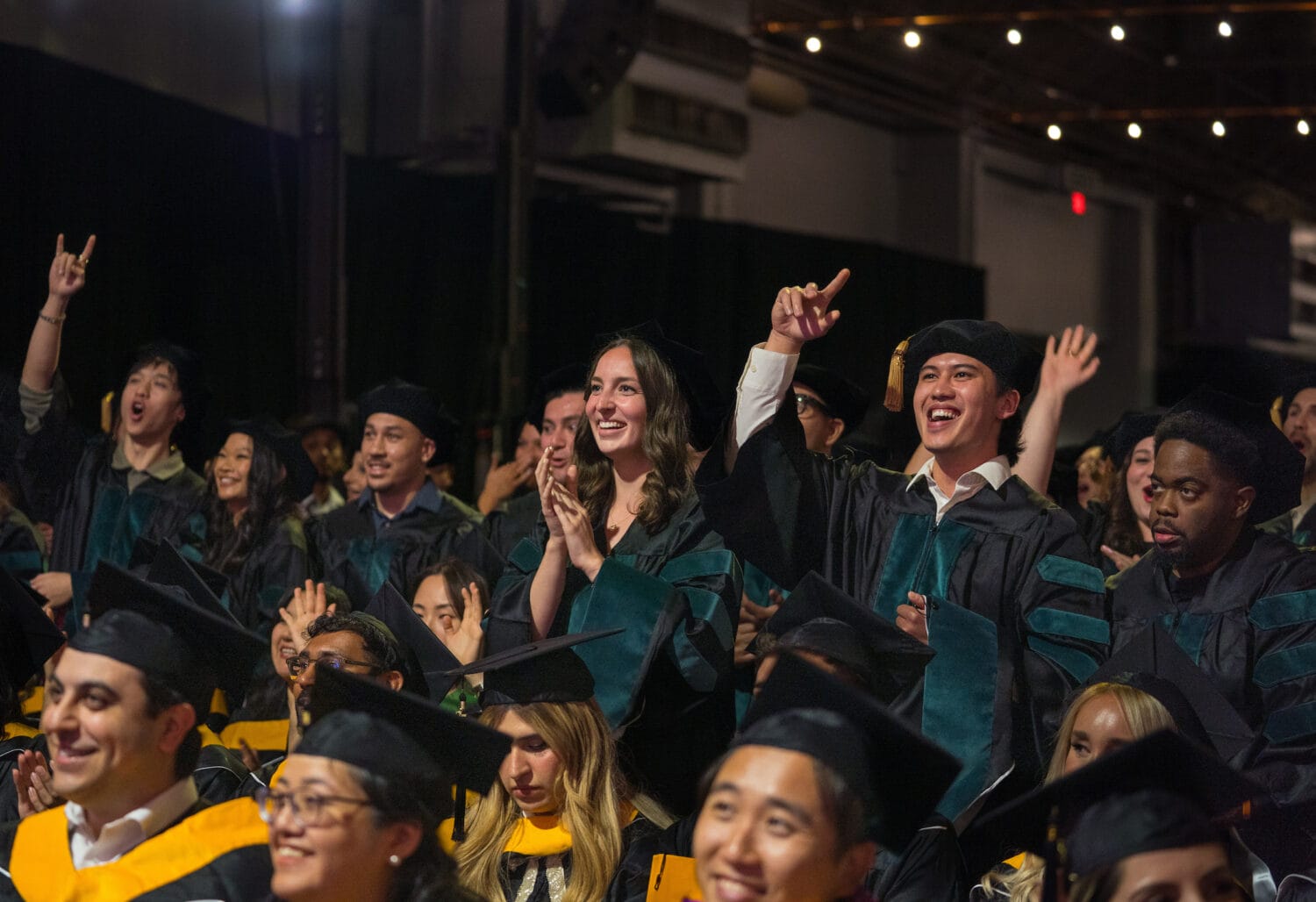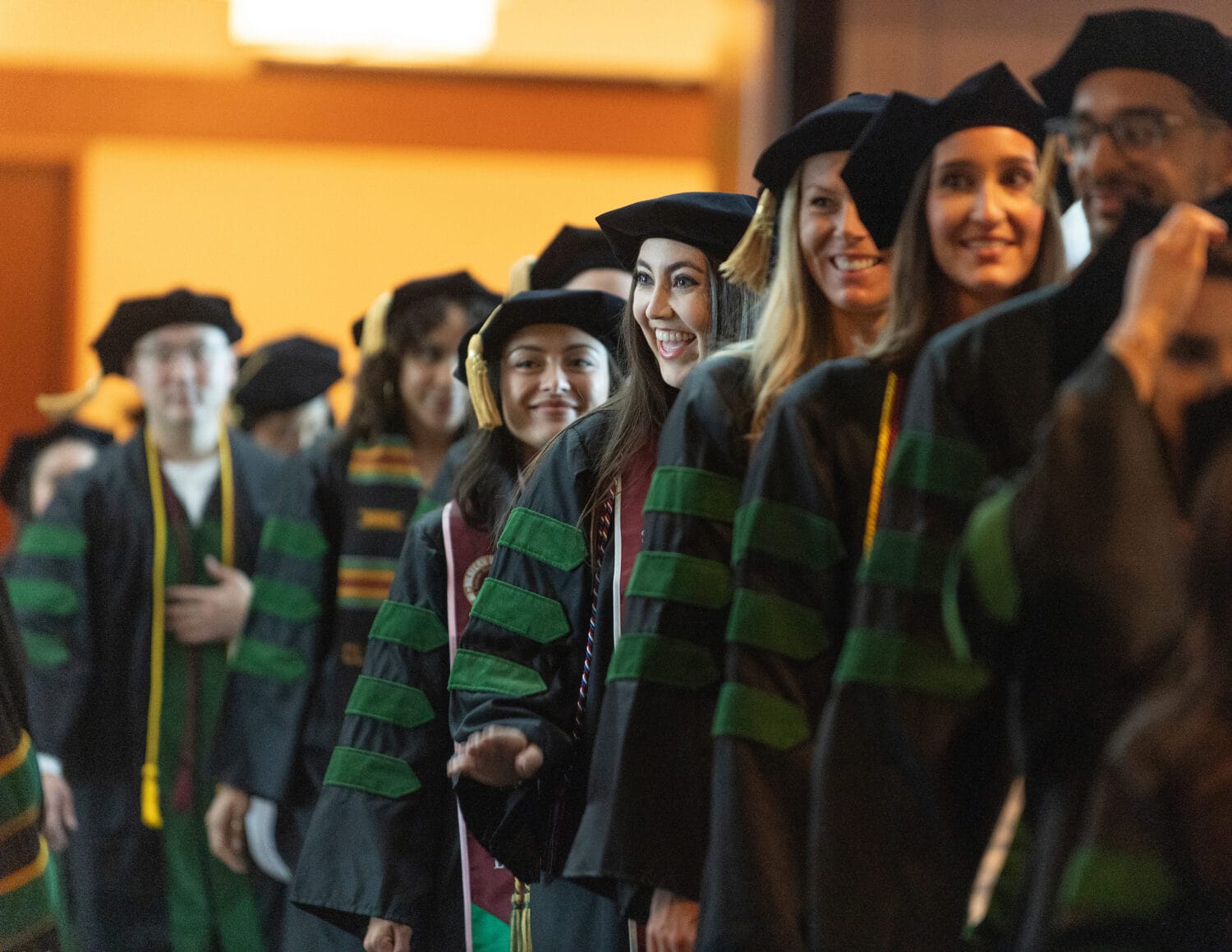COMP students author textbook chapter
Three College of Osteopathic Medicine of the Pacific (COMP) students wrote a chapter in The Textbook of Nanoneuroscience and Nanoneurosurgery, published by CRC Press and edited by Babak Kateb and John D. Heiss.
COMP Dean Paula Crone, DO, congratulated the students — second-year student Houman Badrzadeh, DO ’17, and third-year students Michelle Knosp, DO ’16, and Peyman Tashkandi, DO ’16 — and presented them with commendations.
“I’m really proud of all three of you,” Crone said. “I’m looking forward to what you’re going to do next. What an accomplishment.”
The students started the project when they were Master of Science in Medical Sciences (MSMS) students in WesternU’s Graduate College of Biomedical Sciences in 2011-12. The MSMS program provides students with an opportunity to enhance their learning and reasoning skills and improve their chances at successfully applying to the professional colleges at WesternU and other institutions.
Badrzadeh, Knosp and Tashkandi co-authored “Chapter 7: Carbon Nanoplatforms and Their Application for Neurological Disorders” with Babak Kateb, MD, the Founding Chairman of the Board of Directors of the Society for Brain Mapping & Therapeutics (SBMT) and the main editor of the textbook. The students are listed as contributors affiliated with Western University of Health Sciences.
“We’re proud to have our university’s name as a contributor in the book,” Badrzadeh said.
Badrzadeh met Dr. Kateb at Cedar Sinai Medical Center. They talked about contributing a chapter to the book, and Badrzadeh recruited his classmates.
They had just finished studying for the Intensive Summer Anatomy Course (ISAC), Knosp said. She and Tashkandi agreed to contribute.
“It was all so new. We were trying to find other students who might be interested, but it always came back to the three of us,” Knosp said. “We have the same work ethic and temperament. We work really well together.”
Badrzadeh said he now understands and appreciates the time and effort required for publication work. He also learned the importance of finding accurate sources.
“There are plenty of sources out there, and then you see discrepancies. You have to see which is more accurate,” he said. “That’s challenging. There is so much information out there. I realize I know nothing.”
The students praised the leadership of Dr. Kateb in mentoring them during the writing process while upholding high standards.
“He was harsh at times on us, but it was good because he kept you on your feet,” Tashkandi said. “He criticized in a constructive manner and wanted you to do things by certain due dates.”
The project is an example of evidence-based medicine, Tashkandi said.
“There are PhDs who are working on different projects and they might not even know how much of an impact their work is going to have on medicine,” he said. “And now you get a physician trying to gather all the information, put it all together and apply it to medicine. That’s science at work.”
“When we read textbooks or articles, these authors seem (like) almost an abstract concept. There’s no reality to them,” Knosp said. “When you go through the process of it, you learn to appreciate all the work and dedication and frustration that you have to go through for it, then the exciting part of seeing the actual evidence-based medicine, then putting it out there for everyone else.”



